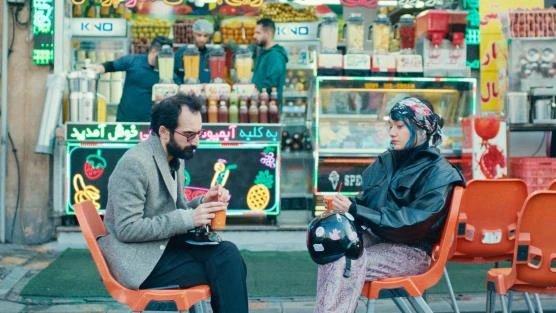International Feature Film Competition
A 40-year-old filmmaker, long denied the right to screen his work at home, attempts an underground showing with the help of his sharp-witted, Vespa-riding producer. As they navigate permits, offices and unanswered phones, the static grind of bureaucracy reveals its own dark comedy. What begins as a screening becomes a study in perseverance, quiet wit and the stubborn hope that seeing, and being seen, still matter.
A 40-year-old filmmaker, long denied the right to screen his work at home, attempts an underground showing with the help of his sharp-witted, Vespa-riding producer. As they navigate permits, offices and unanswered phones, the static grind of bureaucracy reveals its own dark comedy. What begins as a screening becomes a study in perseverance, quiet wit and the stubborn hope that seeing, and being seen, still matter.
Denied, deferred, delayed: the pattern is familiar. Faced with another refusal to screen his latest work, a filmmaker chooses to create the audience that is being withheld from him. With a resourceful producer at his side, he assembles an informal network and moves beneath the radar of ministries and committees. Each step brings him back to the same counters and corridors, yet each encounter, held in steady frames, reveals the texture of a system that keeps people waiting and hopes waning. The cinematic language is deliberately restrained, heightening the absurdity it observes. Bureaucracy becomes a character; the joke is that nothing moves, and yet people do, quietly, cleverly, together.
The cast’s meta presence deepens this exchange between life and cinema: they are not performing resistance so much as continuing it, allowing the camera to hold space for a reality often pushed off-screen. Humour, threaded lightly, functions as ballast, a way to stand upright in a world of shifting rules. The film is less about spectacle than about attention: the courage to look, to gather, to keep faith with the audience that might be scattered at any moment. It is a testament to endurance and to the ordinary audacity of making and showing images when silence would be easier.
The cast’s meta presence deepens this exchange between life and cinema: they are not performing resistance so much as continuing it, allowing the camera to hold space for a reality often pushed off-screen. Humour, threaded lightly, functions as ballast, a way to stand upright in a world of shifting rules. The film is less about spectacle than about attention: the courage to look, to gather, to keep faith with the audience that might be scattered at any moment. It is a testament to endurance and to the ordinary audacity of making and showing images when silence would be easier.

